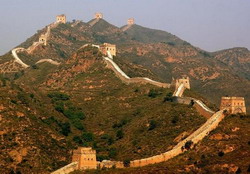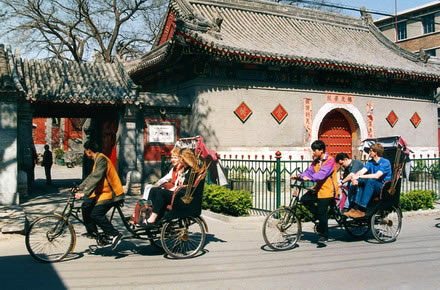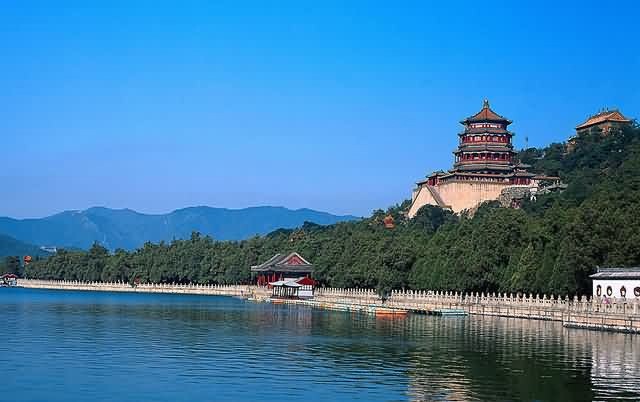
The Simatai Great Wall is 5.4 km long with all together 35 watchtowers. As the east section of the Gubeikou defense line, this magnificent section features great strategic significance. Built hundreds of years ago, the Simatai Great Wall still retains all its original appearance. It not only incorporates a variety of styles of other parts of the 10, 000-li-long wall, but also displays some unique characteristics. This section of the Great Wall is often described with the following five words: perilous, dense, diverse, ingenuous, and peculiar.
In the valley, the Simatai Great Wall is separated into two parts by the Simatai Reservoir, over which a chain bridge runs through east to west. Like two huge golden dragons, the two parts of the Great Wall wind down from the east and west mountains into the reservoir, forming a wonderful reflection of the magnificent Great Wall in the clear blue water.
The Simatai Great Wall, with densely-dispersed watchtowers snaking along the mountain ridges, looks spectacular. On the hills with gentle slopes in the west, twenty watchtowers are well preserved. However, the west part of Simatai, where fifteen watchtowers densely cover the mountain peaks almost one thousand meters high, appears to be more breathtaking. The watchtowers on the Simatai Great Wall exhibit a refined design and various structures, among which the most celebrated are the Wangjinglou (Watching Beijing Tower), where one can enjoy lights of Beijing at night in the distance, and Xiannulou (Angel's Tower), which is characterized by its exquisite structure, with no reference concerning its name origin.
Along the Simatai Great Wall one can also find a section laid with bricks carrying inscriptions, such as "Made by Qiangzi Camp", "Made by the left camp of Shandong in the 6th year of the Wanli reign" and "Made by the infantry camp of suppressing enemy troops in the 6th year of the Wanli reign". These messages not only record their origin, but also the period of time they were written.
It is about 180 km and takes two and half hours drive from Beijing to Simatai. The walk then takes between three and five hours. You can do the whole thing in one long day or go to the start of your walk at the end of the day, have dinner, sleep and get up at sunrise and do the walk. It will certainly be less crowded at that time. Sunrise is beautiful on a clear day and the wall can be amazing in foggy weather too.
Simatai is bigger, more developed and touristy than smaller Jinshanling, it is an easier starting point because it is much easier and faster to get up onto the wall. If you want to sleep up on the wall there is a shop in a watchtower just above Jinshanling.


 About Beijing
About Beijing 


